Table of Contents
Introduction
In simple terms, Ethereum mining is just a way of adding new blocks to your blockchain. This is the process of solving a difficult mathematical problem that minimizes high levels of computing power. Miners help to secure the network and confirm transactions by solving these problems with their hardware.
How to Mine Ethereum 2024
Three ingredients and three steps for an eth mining circa 2024 this part has been written in a way that makes it easier for beginners to understand and carry out.
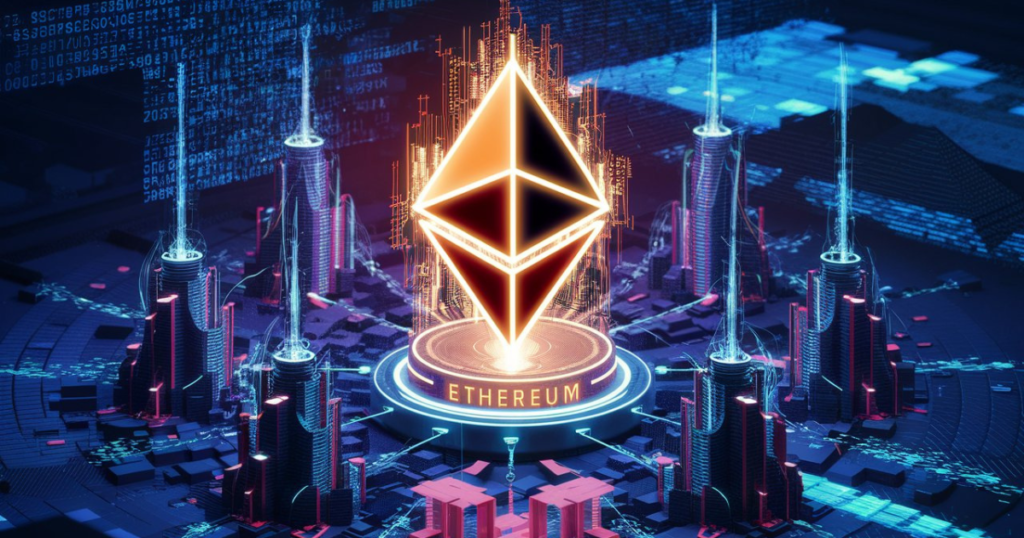
Hardware Requirements
- GPU (Graphics Processing Unit): This one might be the most obvious. NVIDIA and AMD are common choices.
- A Mining Rig: You will need a dedicated mining rig that has all the components such as motherboard, CPU & RAM, and power supply unit.
- Cooling system: Cooling fans or liquid cooling systems help to keep the Icaffienaited rig cooler, hence preventing overheating.
Software Requirements
- Mining Software: Miners use programs like Geth, Ethminer, or PhoenixMiner.
- Ethereum Wallet: Finally, you will be able to store all the Ether (ETH) collected by mining your favorite characters on an Ethereum wallet such as MetaMask or MyEtherWallet.
Setup Process
- Set Up Mining Rig: Assemble the mining rig and make sure all parts are connected properly.
- Mining Software: Select and download the mining software on their website.
- Configure Wallet: Open an Ethereum-enabled wallet and get the wallet address.
Joining a Mining Pool
- Choose a Pool: Some of the popular mining pools are Ethermine, F2Pool, and SparkPool.
- Pool Setup: Register on the mining pool website and configure pool settings within the miner configuration.
- Mining Steps: Run the mining software, and configure it with the server of a specific pool/ sync your wallet address.
Monitoring and Optimization
- Monitoring: Software tools to keep an eye on your hash rates, temperatures, and hardware.
- Overclocking: The process of tweaking the GPU settings to get more performance out of it balancing between speed and stability.
- Energy Consumption: Keep an eye on electricity use and make sure you’re getting a good deal. Make necessary setting changes to maximize power efficiency.
Potential Challenges
Mining can sometimes be more or less profitable based on the price of Ethereum, network difficulty, and operating costs.
- Network Difficulty: With more miners comes higher difficulty in solving blocks and having them included within the network.
- Transition to Ethereum 2.0: A switch of a proof-of-stake (PoS) could affect mining profitability
- Preventive Maintenance: To keep running you need to thrust the hardware at least for planned maintenance.
Minimum Hardware requirements for Ethereum mining
Ethereum mining specs, on the other hand, use specialized hardware capable of solving complex cryptographic puzzles to enable transaction validation and processing using the ethash_pow function. Key Hardware components required are:
GPU (Graphics Processing Unit)
- NVIDIA AMD GPUs Ethash: The actual task that occurs with the high-performance graphics cards, that is the ability of graphics cards for parallel process Axioms, is the Ethereum mining function. For this ign, the NVIDIA GeForce RTX 3080 and AMD Radeon RX 6800 would suffice sufficiently.
- Radeon Memory At least 6GB of memory is needed for Ethereum mining with AMD Radeon because the DAG file will increase over time.
Central Processing Unit (CPU)
- General Requirement: CPU is not closely related to GPU anymore, but it is preferable to have multi-core such as i5 Intel or Ryzen 5 AMD so that one will not feel stuck or struggle when operating.
Motherboard
- PCIe Slots: It must support multiple GPUs, with a minimum of four to six PCIe slots. ASRock H110 PRO BTC+ -In Fact, Best Budget Choice; MSI Z390-A PRO
Power Supply Unit (PSU)
- Power Supply: It should be strong enough to work with at least a few GPUs. A 1000W PSU may be needed for a rig with 4 GPUs, as an example. Make sure the PSU is certified by 80 PLUS Gold for efficiency.
- Power Connectors: The GPU requires a certain number of power connectors.
RAM
- There’s plenty of capacity here too – mining doesn’t require all that much RAM itself and 4GB-8GB DDR4 would typically serve you well for general system use.
Storage
- factor & size: 120GB SSD for OS and mining software. Because of their faster boot times and increased reliability, SSDs have become the standard over HDDs.
Cooling Solutions
- GPU Cooling: High-end GPUs generate excessive heat and require effective cooling solutions. Look for aftermarket cooling add-ons or rigs endowed with built-in ventilation capabilities.
- Natural Cooling: Make sure the room you are using for mining is properly ventilated or add fans and air conditioning units to regulate running temperatures.
Internet Connection
- Speed and Stability: We recommend using a decently fast, stable internet connection to stay in communication with the Ethereum network continually. Missed block opportunities on account of latency issues
Rigs and Cases
- Design: Many open-air frames are commonly used by miners as they provide better cooling than closed cases Ensure the rig is spacious enough to hold all of your components and decent airflow.
Ethereum mining software
For mining Ethereum, you need to have proper mining software. It allows a miner to connect his mining hardware with the Ethereum network to either secure and validate transactions or create new funds. There are some options and each option has its unique features and functionalities. Below, you can find popular Ethereum mining software.
1. Claymore’s Dual Miner
Claymore Dual Miner is widely used in the mining community because of its efficiency and dual-mining feature. Key features include:
- Dual Mining: Allows same time to mine Ethereum with other cryptocurrency such as Decred, Siacoin
- Beginner-Friendly: Easy-to-use interface.
- Flexibility: Very stable and supports a wide range of GPUs.
2. Phoenix Miner
Robust performance Highly efficient Offers a range of inbuilt features Supports both AMD and Nvidia GPUs Multiple optimizations ensured Automatically mines the most profitable Algorithm requirements are easily met.
- Support: AMD and Nvidia GPUs
- Better Hash Rates: Usually, it offers a higher hash rate compared to other software.
- HelpDesk: Well-documented help guide and community support available.
3. Ethminer
Ethminer is another popular open-source Ethereum mining software that goes hand-in-hand with solo miners:
- Cross-platform compatibility (Windows, Mac, and Linux support)
- You can configure the wrapper to run your TeamViewer to be able to connect virtually forever.
- Community-Supported – Siemens enjoys an active user and development community.
4. CGMiner
Created to Bitcoin, adapted for Ethernet CGMiner
- Open-Source: Completely open-source, full transparency.
- Advanced Features: Fan speed, remote interface, etc.
- Cross-Platform (Windows, Linux & Mac Support)
5. Geth
Geth is an Ethereum client which means it can store transactions, load up new blocks, and much more but Geth is not only a mining software.
- Full Node: Acts as a full node and is essentially more than just a miner.
- Ethereum Wallet: This provides facilities for the Ethereum wallet.
- Network Participant – Helps validate and relay transactions.
To set up the software:
- Getting it: The program must be downloaded directly from the official site or another reliable source.
- Installation: Installation instructions are provided by the software.
- Setup: Set up parameters (address, pool info, hardware settings)
- Mining: Run the software to begin mining Ethereum.
It is important to ensure that the mining software you choose works with your hardware and operating system before installation. Optimization of the efficiency can be done by having regular updates and feedback from the community. Take the software that meets our individual needs such as multi-mining, interface usability, or additional features.
Ethereum Mining with Popular GPUs
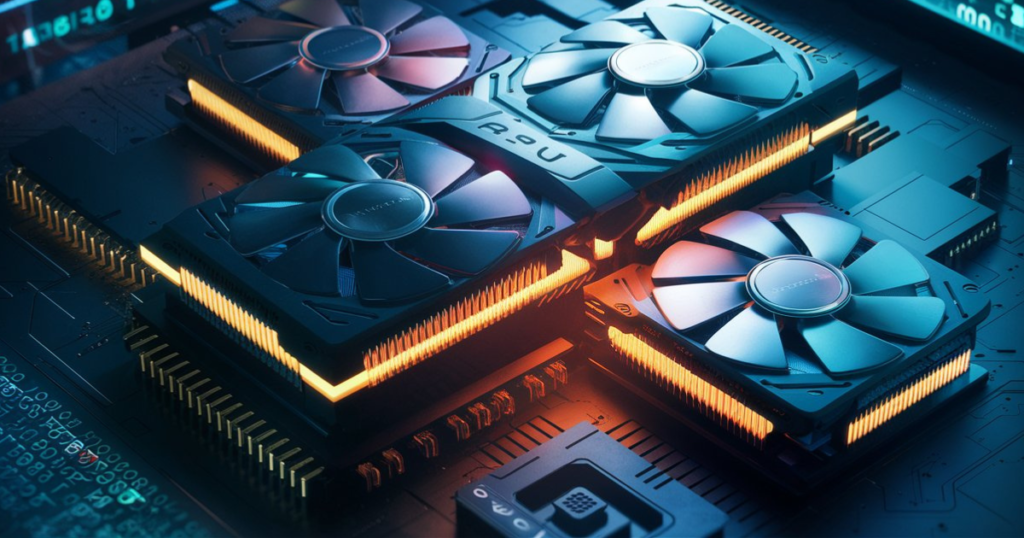
NVIDIA GeForce RTX 3060 Ti
- Hashrate:~60 MH/s
- Power use: ~200W Source
- Memory: 8GB GDDR6.
AMD Radeon RX 580
- Hash rate: Roughly 30 MH/s.
- Electrical power: Approx, 185 watts.
- Memory: 8GB GDDR5.
NVIDIA GeForce GTX 1660 Super
- Hash rate: Close to 26 MH/s.
- Power draw ~125 watts
- Memory: 6GB GDDR6.
How to Get The Most Out Of GPU Mining
Overclocking:
- Clock Speed Increase of GPU
- Overlocking has to be done cautiously in order not for the system to overheat and components damage.
Undervolting:
- Underclocking – this is the opposite of what overclockers do, reducing how much voltage your GPU needs to draw less power.
- The hash rate is also valuable, so effective undervolting will save you on electricity costs without losing hash.
Cooling Systems:
- Mining emits a lot of heat but you need to cool done that ASIC so what better way than using it?
- Air-cooling, liquid cooling, or utilizing dedicated mining rigs with several fans.
Joining a Mining Pool
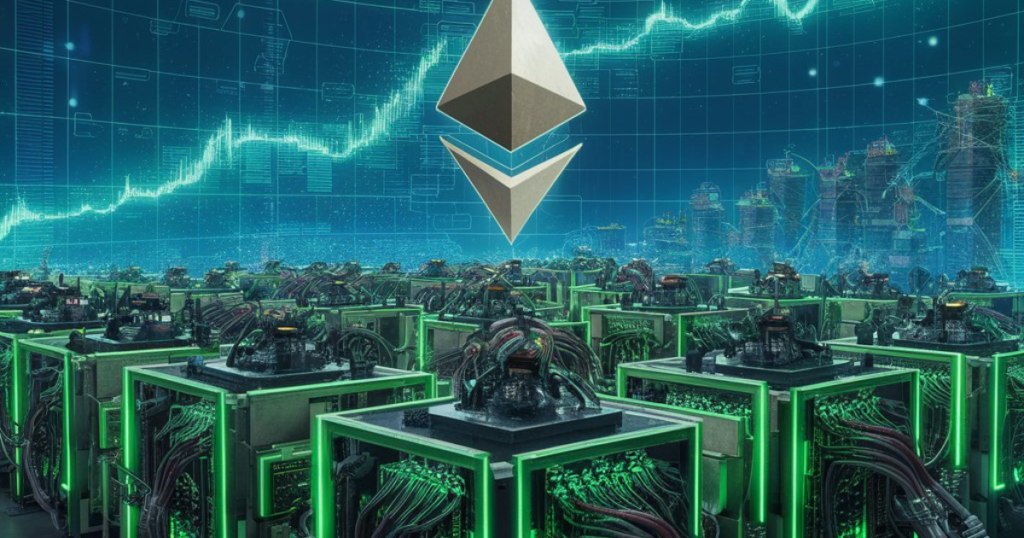
What is a mining pool? A mining poll is a sort of group of miners together, who combine their resources to achieve greater success in the form of finding blocks and getting rewards for their job done. For an entry-level miner, it is going to be much easier for you if perhaps you join a mining pool. This provides a more regular and predictable return from mining. Before I continue to the next section, here are some steps and aspects to consider before joining a mining pool;
Selecting a Mining Pool
- Where to mine: Choose a popular and well-established mining pool for better reliability and security.
- Fees: Fees will be different depending on the pool, but in general they are between 1%-3% within peak times. With lower fees, come higher profit potential.
- Payout Method: they use different payout methods, PPS (Pay Per Share) standard pay per share, PPLNS(Pay Per Last N Shares Pay Each Round), and PROP(proportional profit). Each of these approaches has its advantages and disadvantages.
- Pool Size: Bigger pools = more frequent payouts with smaller shares, while small pools mean less but bigger more infrequent payout
Signing Up
- MediaHuman pools account creation
- You can download mining software yourself and link it to the pool. Instructions for settings are usually provided by the pool.
- Your Ethereum wallet address is where you will receive the earnings.
Pool Configuration
- Username + Worker ID: Miners usually need a separate worker to track each of them Here you can generate or handle these IDs using your pool account.
- Mining Pools: Mining pools have specific server addresses and ports. Make sure to have this data configured in the mining software.
- Difficulty: Pools can set a different difficulty for each worker to maximize earning potential.
Monitoring and Management
- Controls: Pools have online dashboards to control your hash rate and see earned bitcoins in real-time.
- Monitoring: Create monitoring for idle workers or low performance to reduce the outage time.
- Withdrawal: know payout thresholds from the pool to plan to earn withdrawals properly
How to mine Ethereum
1. Study and Learn about Mining
One should understand Ethereum and cryptocurrency mining principles before embarking on it. Learn about blockchain, smart contracts, and Ethereum 2.0 Proof of Stake Migration!
2. Get the Right Hardware
To mine Ethereum, you only need a powerful GPU (Graphics Processing Unit). Here’s a quick guide:
- ASICs: Not useful for Ethereum, which is too complicated.
- Storage: The Recent Hard Disk is huge and the system consists of numerous CPUs, all are Power demanding in any case. The most common are NVIDIA and AMD.
3. Install Mining Software
There are plenty of tools to replace. Miner chooses based on compatibility and preference:
- Claymore Miner: Popular for dual mining
- Geth: Official Go implementation of the Ethereum protocol.
- Ethminer: Ethereum mining only.
4. Setup a Wallet
You need a digital wallet to store the mined Ether (ETH). Options include:
- Hardware Wallets: Highest security level
- Software wallets: are – user-friendly, they can be used on multiple devices.
- Paper wallets: (Secure but Not user-friendly)
5. Join a Mining Pool
For the newbie miners, mining solo can cost more than its payment and that is why they should join a pool to increase chances of earning rewards. Popular mining pools include:
- Ethermine
- F2Pool
- SparkPool
6. Configure the Mining Software
Install the mining software according to our selected hardware and pool of choice. This usually involves:
- Configuring Your Miner: Enter the wallet address and set the miner to best performance mode.
- Through the Pool: Input credentials retrieved from the mining platform chosen
7. Monitor and Maintain
More Overclocking is an Extended Specific Task and Efficient Performance for Mining Purpose as:
- Monitoring Performance: Tools included in the mining software dashboard
- Frequent Updates: Make sure that the software, and firmware drivers are maintained up-to-date which can avoid malfunctions and better performance.
- System Maintenance: Regular cleaning of GPUs to avoid overheating.
8. Optimize for Profitability
Optimize Mining Efficiency – Continuous Process-mining analysis and adjustments for peak profitability
- Power price: Time to consider Power – use and prices.
- Overclocking: By playing with hardware settings, hash rates can be increased.
- Other Cryptocurrencies: Sometimes finding a more profitable coin to mine will yield better outputs.
How to Mine Ethereum on a Laptop
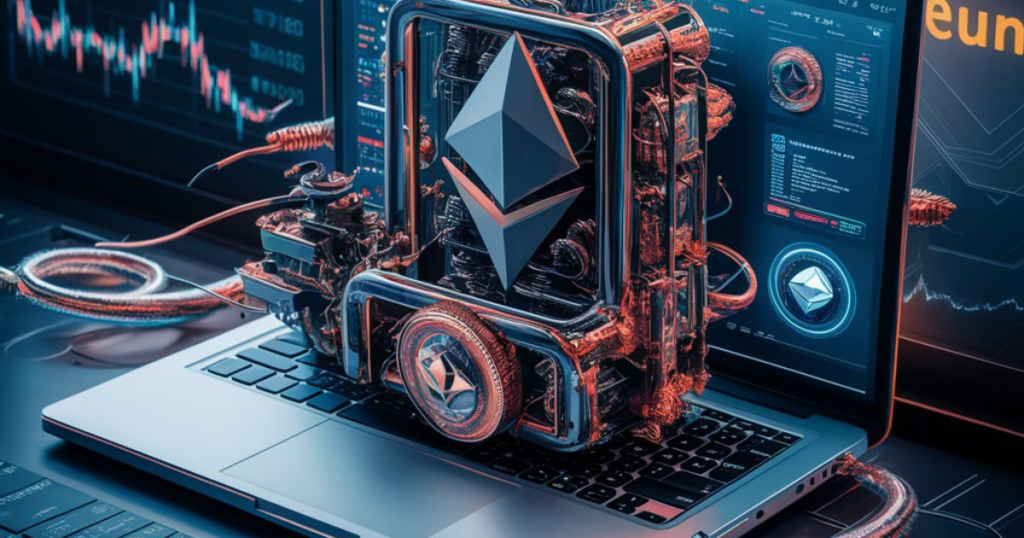
Mining Ethereum on a laptop is not an easy process and then it has some steps that need to be taken so that mine ergo efficiently and securely. This beginner guide shows the basic things required to start mining.
Check System Specifications:
- The laptop has a dedicated GPU (Graphics Processing Unit) to perform the mining, as with integrated GPUs it is impossible.
- These are the GTX/RTX series from NVIDIA and the RX Series From AMD.
- Check for cooling solutions and if they can handle the thermal load while mining.
Download Mining Software:
- Select compatible mining software according to the operating system of your laptop.
Some popular Ethereum mining software are:
- Claymore
- PhoenixMiner
- Geth
- Using the selected software, download and install keeping in mind not to take from untrusted sources which results in bug cause of malware.
Create an Ethereum Wallet:
- A wallet is necessary for the Ethereum we will mine.
Some of the popular wallets include EDA
- MyEtherWallet
- MetaMask
- Ledger Nano S
Join a Mining Pool:
- Solo mining can be impractical because of the low hash rates possible with a laptop.
- Join a mining pool to cripple resource usage with other users which increases the earning probabilities.
Suggested mining pools:
- Ethermine
- SparkPool
- F2Pool
Configure and Start Mining:
- Add the pool server address and wallet to your mining software config file (please note this configuration may vary depending on the miner).
- Set software parameters high but not too high to monitor temperature and GPU usage and make sure it doesn’t overheat.
- Initiate mining from the command line or software interface and keep an eye on performance through tools available with dashboards.
Monitoring and Maintenance:
- Keep track of the performance on your laptop and earnings regularly.
- Manage GPU performance and temperatures using tools like MSI Afterburner.
- Dust filters need to be kept clean and the PSU needs ventilation, so do not forget about those if you want any kind of cooling.
While mining Ethereum with the hardware of your laptop can be profitable, it requires maintenance and constant attention to monitor possible degradation on the PC.
How to Mine Ethereum on Windows 10
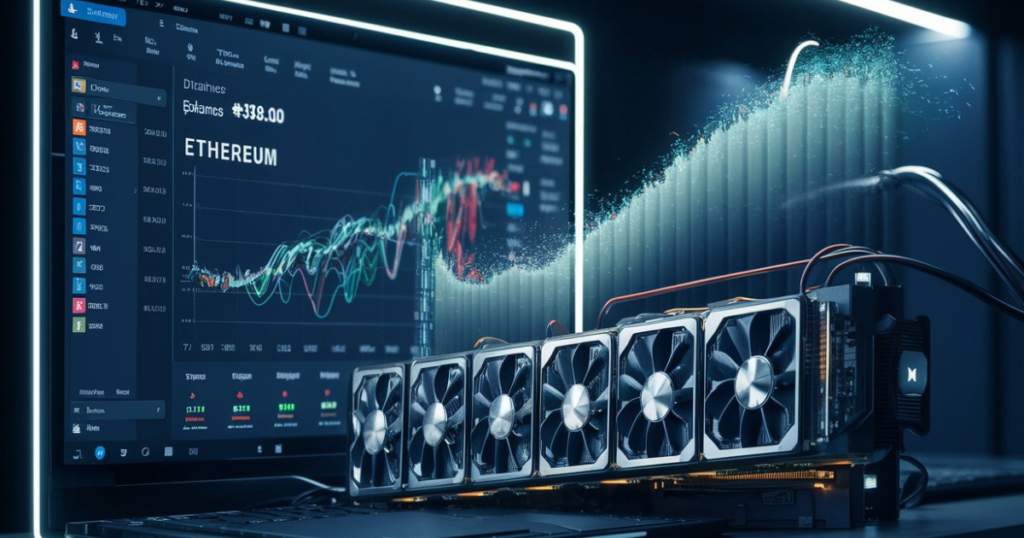
On that note, keen readers should know mining Ethereum on a Windows 10 system involves several steps: Each of the following requires software tools to be appropriately completed. The basic software solutions required for any newbie(DialogInterface)
Mining Pools
Joining a mining pool will make you win rewards more often. Following are some well-established mining pools that work on Windows 10:
- Ethermine: This site has an easy interface and it reliably pays out.
- SparkPool: Offers different types of mining and analysis details.
- Nanopool: A pool that supports a plethora of cryptocurrencies and provides the best mining methods.
Mining Software
On Windows 10, there are several mining programs available for Ethereum mining. Every single one of them has its features, settings for optimization purposes as well as StreamReader. Following are a few of the mining software that stand out:
- Claymore ETH Miner: CPU and GPU miner based on dual mining capabilities
- PhoenixMiner: Known for high performance and low fees, hence widely used by miners.
- Ethminer: open-source and conveniently designed software with support for GPU mining NVIDIA and AMD video cards
GPU Drivers
To be efficient in the mine, we require modern drivers that can give us maximum function and stability with our mining efforts. You can find these at
- NVIDIA: The drivers that work can be found on the website of NVIDIA.
- Driver for AMD GPUs are available from the AMD website.
Wallets
To hold and control the Ethereum mined you will need an Ethereum wallet. Wallet options include:
- Web3 Wallets: If you are using Web as the Decentralized exchange (DEX) to connect with multiple chains and bridges, you can also go for the metaMast-like wallet.
- MEW (MyEtherWallet) offers a secure and effective way to manage your Ethereum tokens and other ERC20 tokens.
- HW Wallets: Ledger Nano S – High-security hardware wallet.
Configuration Settings
Mining software can be configured in a way that allows you to tweak and finetune settings for best performance:
- Operation: Install according to the installation guide provided by the mining software
- Edit the. env File: Configuration Files bat or. You will also need to edit a notepad file merging some parameters so that you have the correct pool, wallet, and GPU settings.
- Test & Tune: Run some early-on tests and tune in your clock speeds, fan settings as well as maximum power limits for the best efficiency.
Monitoring Tools
It stabilizes and profitability is monitored in the mining process. The most popular monitoring tools are:
- MinerStat: Provides a range of monitoring tools.
- Hive OS: Real-time monitoring and remote management.
- Run MSI Afterburner: This lets you overclock your GPU and monitor its temperature, usage, and more.
Both of these are tools you will need to understand and provide a breakdown of how everything interacts with each other since anyone in their right mind only wants to mine Ethereum on Windows 10. The foss mining software has different parts that exist for one purpose such as mining pools, drivers, and configuration picks.
How to mine Ethereum on Android
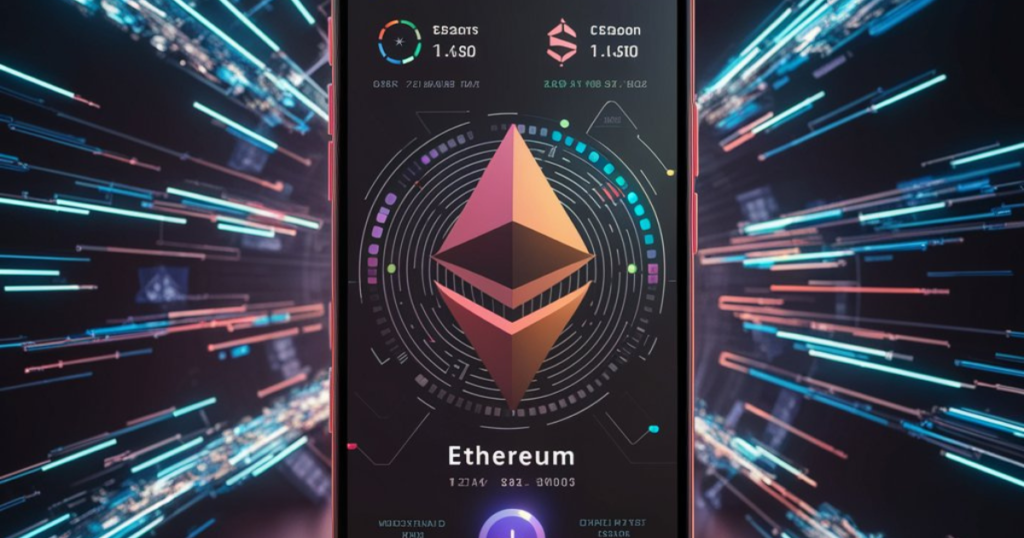
This is an easy way for new starters to mine Ethereum on Android. While it is not going to replace specialized mining rigs, Android devices can be used as an additional means of participation in cryptocurrency Top (Neutral)_CRYPTO. Here’s how, and what to consider:
Download a Mining App
- Find a Trustworthy Ethereum Mining Application (such as from the Google Play Store)
- A few examples are MinerGate, Crypto Miner, and Pocket-Miner.
- Read user reviews and ratings before download
Create an Ethereum Wallet
- Setup an Ethereum Wallet for Mining Rewards
- Trust Wallet, MetaMask or MyEtherWallet.
- Keep track of &secure wallet private keys
Sign Up/Register
- Launch the desired mining app and sign up.
- (Some apps may require an email address to set up.
App Configuration
- Put in the Ethereum address which should receive your mining rewards,
- Develop the capabilities of your device.
- Monitoring the temperature of the device is Responsible
Join a Mining Pool
- Solo mining results in little for Android users, so join a mining pool instead.
- Firms use mining pools to join their workers so that collectively they get more – steady and continuous rewards for constant work.
- Put pool details in the mining app settings
Start Mining
- After everything is configured click “Start” to start mining.
- The app would use the smartphone’s CPU to mine Ethereum.
- Check your performance and earnings in the app from time to time.
Manage Power and Resources
- Mining drains the battery; make sure the device is connected to a power source.
- Shut all the apps not in use to make way for more CPU-level.
- This is also wear and tear on the device, so BEWARE
Cash Out Earnings
- Collect some Ethers in exchange for your write and earn a lot of Ethereum!
- Send your transferred earnings to your personal Ethereum wallet
- Convert Ethereum to fiat on exchange if desired
Staying up to date with the changes in the Ethereum network and mining difficulty is very important Adjust strategies as needed. Android mining isn’t going to replace traditional methods, but it’s a good introduction for all the new miners.
How to Mine Ethereum on PC
This process needs the step hardly and utmost requirements to mine Ethereum on PC. Read here for a detailed breakdown of how I went about this:
1. Hardware Requirements
GPU: A high-end graphics card is a must. Then AMD and NVIDIA graphics cards to choose from.
Power Supply (PSU): Make sure that the power supply can handle how much electricity we are using for GPUs.
Temperature: It means that there has to be proper cooling so the system is not overheated.
RAM: Minimum of 8GB RAM.
Disk Space: 100GB SSD or more
Motherboard: You have to select a motherboard that can accommodate more than one GPU.
2. Software Requirements
OS: Windows 10 or Linux
Drivers: Make sure to update your GPU drivers.
Ethereum Wallet: needed to keep mined Ethereum.
Mining: Select Geth, Ethminer, Claymore, or PhoenixMiner rpc
3. Setting Up
Install OS: It initially requires OS in the form of Windows, ubuntu, Mac, etc, and requires to be updated to its latest version.
Update GPU Drivers: It is also possible to download new drivers from manufacturers’ websites of the AMD or NVIDIA that you use.
Getting your Ethereum Wallet: Set up a wallet on either MetaMask or MyEtherWallet.
4. Configuration
Pool mining or Solo Mining: Choose a Pool for predictable payouts or solo mining If you are feeling lucky.
- Pool Mining: Join a pool like ethermine.
- Solo Mining: Set up a miner to point at the Ethereum network
Configuration File: Change the configuration file of mining software by replacing your wallet address and URL to connect with a mining pool.
5. Running the Miner
BATCH FILE: To prepare. a bat file that contained a few commands to begin the mining process. For example:
Ethminer.exe -P stratum1+tcp://<your_mining_pool>:<port> --user <your_eth_wallet>Mining Started: Double-click the batch file to start mining. The miner connects to the pool or Ethereum network and mining can be started through it
6. Monitoring and Maintenance
Check Performance: Software tools to check the temperature of that old node, hash rate, and power consumption.
Tune Settings: Set up settings for optimal performance of memory clock speed, power limit, etc.
This will be a continuing post running all tips in cycles with the first tip again and this time, three simple yet effective steps to improve mining efficiency.
How to Mine Ethereum on Mac
The process is quite simple and easy but one has to be very careful.
Requirements
- Mac with robust GPU: MacBook Pro or iMac which has a speedy graphics card.
- Connection to the Internet: Must provide constant work.
- Ethereum Wallet: To store the Ether mined.
- Software: Minergate or equivalent application mining software.
Step-by-Step Guide
- Install Homebrew
- Get Xcode Command Line tools
In Terminal:
- Xcode-select –install
Download OpenCL for Mac:
- Install OpenCL via Homebrew:
- brew install OpenCL
Create an Ethereum Wallet:
- Create an account on MyEtherWallet (or any other trusted Ethereum wallet service)
- Make sure to securely store the wallet keys and password!
Choose a Mining Pool:
- On Ethermine, F2Pool, and Sparkpool.
- Join your desired mining pool and get some details of the pool from there.
Download Mining Software:
- While Minergate is also certainly an alternative option, another software that can be used for Ether mining is Ethminer.
- brew install miner gate-cli
Configure Mining Software:
- Configure It Using the working of a Terminal
- Substitute and with your personal wallet address.
Start Mining:
- Run the configured mining software
- . /minergate-cli -user WALLET_ADDRESS -pass x –url-stratum POOL_ADDRESS
Monitoring and Maintenance
- Check Performance: utilize something like Activity Monitor to monitor GPU performance.
- Thermal Management: Make sure that the hardware does not overheat and protect itself as much as possible.
- Frequent Upgrades: Update both mining software and Mac OS to keep it optimally functional and secure.
Thus, users can easily go through these steps systematically and start the process of Ethereum mining on their Mac systems without any hindrance if they have a hardware system that meets their needs as well as active internet connectivity.
Ethereum Cloud Mining
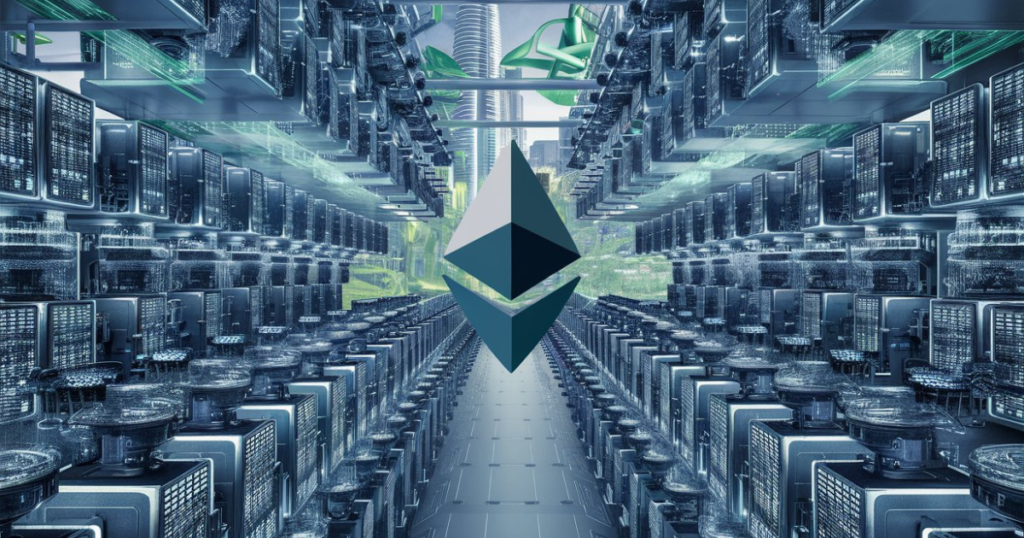
Instead of owning and maintaining these hardware devices, you can rent them from third-party service providers on a contractual basis to mine Ethereum through cloud mining. This provides a more viable starting point for beginners to mine Ethereum without excessive investment in hardware or the complexity of setting up your mining rig.
Advantages of Ethereum Cloud Mining
- Cost-Efficient: You don’t have to buy any mining hardware and put it in your home.
- Accessibility: Decide for Beginners with Limited Tech Skills
- No overhead: Service providers take care of all the hardware, setup, and electricity costs
- Scalability: Simply scale mining operations depending on larger or much more profitable agreements.
How It Works
- Choose a provider: Do Your Research and Select Credible Cloud Mining Services Common providers have thorough assessments available and offer several deals.
- Buy a Contract: Now, select which contract you would like to purchase and how much hashing power(#) as well. Contracts can be for months, to years.
- Payouts: When the contract is up and running, your hash power will mine Ethereum. In general, you should receive your earnings in your digital wallet on a repeating basis.
There are many popular Ethereum Cloud Mining providers
Genesis Mining: A veteran cloud mining service with a wide variety of contract options.
Hashflare: Allows users to interface hash-power with customized mining contracts.
NiceHash: A free market that offers buyers and sellers the power of a hash to mine Ethereum.
Ethereum Mining App
Mining Ether requires a few essential software tools to maintain the speed of Ethereum mining. These apps do so by resource optimizing, miner hardware managers, and making sure the miners work seamlessly. So here are some of the essential things and features for Ethereum mining apps –
Key Features
User-Friendly Interface
- Any good Ethereum mining app will be easy to use, with a friendly interface. The above is very important for novices since it provides an uncomplicated way to features and choices.
Hardware Compatibility
- The app has to be compatible with diverse mining hardware, like Nvidia and AMD GPUs. Some apps also support FPGA and ASIC devices for better performance.
- Performance Monitoring
Powerful mining applications give miners real-time monitoring of their performance. Data such as hash rate, temperature, power consumption, and amounts of Ethereum mined are provided.
- Automatic Updates
Regular updates help keep up the interoperability of an app with newer versions as well as apply necessary security patches due to changes in Ethereum’s protocol. Fraudster jail: Essential to run smooth and secure mining operations.
- Dual Mining Capabilities
There are also dual mining options on some of the available Ethereum mobile mining apps so that you can mine multiple cryptocurrencies simultaneously. This will help them make maximum use of their idle resources, which can be more profitable.
How to Mine Ethereum for Free
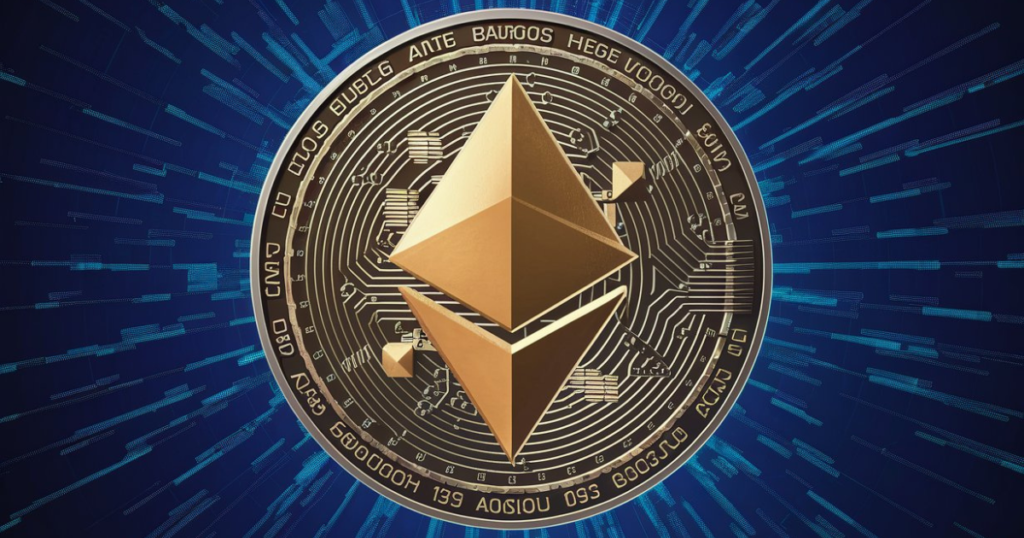
Most of the methods make it difficult to mine Ethereum in terms without any upfront investment. 7 Key Tactics to Repost Like a Pro
Free Mining Software and Tools
- Free GPU mining software: Use the free Ethminer, PhoenixMiner, or Claymore to work with your existing collection of GPUs.
- Mining Pools: these are again free for joining many popular, Ethermine or F2Pool, and allow a group of individuals to combine resources to increase their chances of solving the complex algorithm.
- Open source mining tools: already available online. This pays you nothing and this is completely transparent as well as free from formal things.
Cloud Mining Free Trials
- Free Trials: A few cloud mining products and services for example Genesis Mining or Hashflare possess promotional codes however, they may no longer have free trials.
- Referral Programs: Like referral programs, you can do with the credits up miner contracts or even resources too.
AirDrops and Faucets
Ethereum Faucets: Free-Ethereum. io provides dispersed Ethereum on a timely basis in increments parts. Most faucets allow you to fill in a captcha or carry out assignments.
Airdrops: Interact with blockchain projects that give out Ethereum or tokens via airdrops by achieving the most minimal participation requirements like holding some set of tokens, basic verification, and more.
Staking and Earning Programs
Staking Platforms: Some platforms offer ETH staking as well in exchange for rewards without running mining.
Loyalty rewards: A few exchanges, as well as some DAOs, provide the ability to receive Ethereum tokens from loyalty reward programs or interest-earning accounts.
Leveraging Earn Programs
EDU platforms: Websites such as Coinbase Earn or Binance Academy give away Ethereum after completion of educational modules.
Survey and Task Platforms: They are sites that offer Ethereum for participating in market research or signing up to other free websites, as well as by watching videos online(embeds- Well then I need some tools).
The Efficient Use of Resources
Efficiency: Use energy-efficient GPU setups which bring down the costs of electricity and make mining almost ‘free’
Low-Power Mining Equipments: Prefer equipment with low power use such as FPGA miners which though rather expensive when it comes to first cost.
FAQS:
So can you just mine Ethereum even with your personal computer?
The short answer is yes, you can but the process of mining Ethereum will need a powerful GPU (Graphics Processing Unit) even if it runs on your personal computer. ASIC (Application-Specific Integrated Circuit) miniers are also regularly used though they are more effective.
Is it worth waiting to invest in Ethereum mine until 2024?
Of course, that is as long as the electricity in your area remains cheap and also considering conditions on Ethereum price levels, mining difficulty, etc. It is necessary to calculate the perspective profits and weigh out of them with all costs.
Should I mine Ethereum in a pool?
Indeed, individual miners are generally encouraged to join a mining pool. Positively, mining pools leverage the computation power of all its members to solve blocks faster and divide rewards amongst them accordingly which increases your chances of good earnings regularly.
Does Ethereum require a lot of energy for mining?
The elephant in the room is that Ethereum mining consumes a lot of electricity, and this fact cannot be mitigated. Of course, the power usage is only based on what hardware you are running.. more powerful rigs mean higher energy. The profitability of the blockchain can be affected by electricity costs.
Cloud Mining for Ethereum: Is it possible to mine on a cloud?
You can cloud-mine Ethereum. These services will enable you to rent mining hardware located in a data center rather than having your equipment. That said, you should do some research and select a cloud mining provider with good reviews to ensure that it is not a scam.
Conclusion and Final Thoughts
To mine Ethereum, you would need knowledge of hardware, and software configurations as well as the ETH mining process. Understanding the capital intensity of hardware such as GPUs, power supplies and cooling systems is crucial. By having the best mining equipment, you are allowing your farm to not only have better profitability but longer longevity in terms of how long those machines will be profitable outside that 15-year lifespan it’s mentioned.
Some of the main areas to focus on include:
Hardware Selection:
- There are many options among AMD and NVIDIA.
- A power supply link that connects everything with enough power.
- Helps stop overheating and preserves performance.
Software Setup:
- Mining Software: for example Ethminer, and PhoenixMiner.
- Wallet: Ethereum is the most purchased cryptocurrency, and the wallet supports Ethereum for the storage of mined coins like the popularly used netmask.
- Examples: SparkPool, Ethermine (Distributes rewards on a contribution basis)
Efficiency and Optimization:
- Overclocking: This can increase GPU performance but must be kept in check with cooling.
- Power Consumption: Power usage can be monitored and optimized to maximize net profitability.
- Update: Regular Updates make sure that your software is safe and compatible.
In addition, miners have to take into consideration the environmental impact and energy usage generated by mining. The ecological footprints can be curtailed to an extent by following sustainable practices and using energy-efficient hardware. In addition, miners will want to stay updated on the larger shift of the Ethereum network towards Proof of Stake (PoS), as this reduces demand for traditional mining hardware outright.


Brilliant